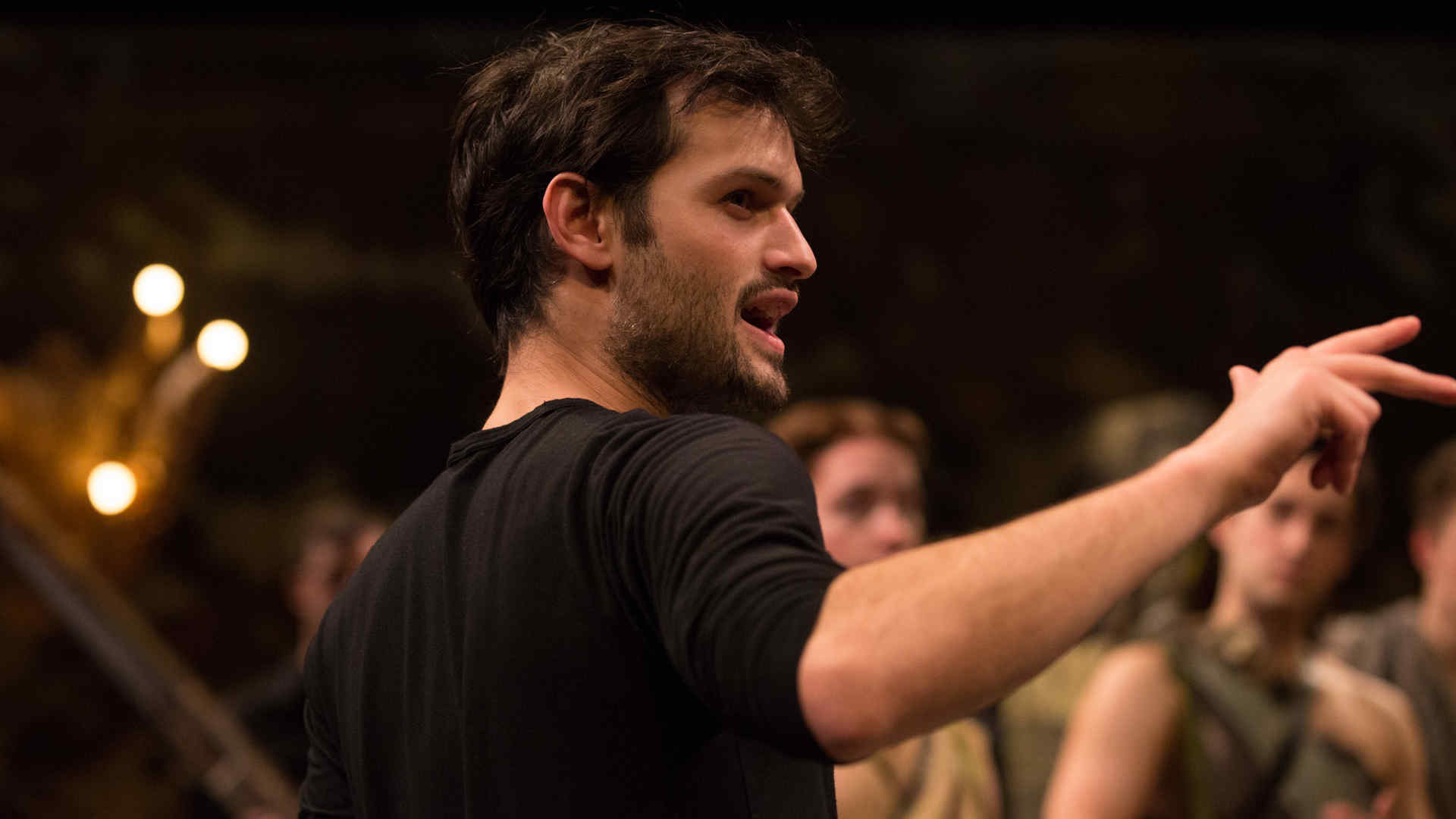
One benefit of producing opera in a school setting is the generous amount of rehearsal time—essential to the learning process—since for these singers and dancers in training, the rehearsal room and the classroom are the same. In January, Zack Winokur (BFA ’12, dance), who is choreographing the spring opera, Rameau’s Baroque tragedy Hippolyte et Aricie, and Stephen Wadsworth, the show’s director, convened in a third-floor studio with Juilliard dancers to begin to shape the show’s dances. Afterward Winokur spoke with Journal assistant editor Joshua Simka (BM ’14, voice) about the formulaic construction of 17th-century opera and elevating the role of dance by thoroughly integrating it into the drama.
I’m not interested in making ballets that sit next to, or adjacent to or in the middle of—but separate from—the actual thick, interesting storytelling of the opera, so we tried to find ways to incorporate the dancing that aren’t traditional. For instance, the dancers are present for much of the show. They act as part of the chorus. They’re courtiers, hunters—people who live in this world like the rest of the cast. They have moments when they’re acting as landscape, when they’re acting as people, when they’re acting as interior psychological interpretations or manifestations of what people are thinking—and that feels like a much more integrated and interesting way of using dance.
Getting the dancers hooked
One of the things we have to find in this kind of collaborative work between dancers and singers is a fluency of language, so not just being able to talk about but also being able to respond to one another’s movement. Finding a way to establish intention- and thought-driven storytelling thorough gesture and dance is hard. Dancers are trained to respond to movement but singers aren’t necessarily. Therefore, I thought it was important that we start by establishing with just the dancers a way of working together. We began with an exercise Stephen Wadsworth uses with singers, which is to respond through movement—to let your thoughts change and inflect the way you move. Singers who have worked with him on arias will know this as “sentence work,” and it tends to produce very deep and actor-ly performances. Dancers are not often asked to think that way, though, and at that point in the workshop we weren’t even dealing with music yet. We were just trying to get the dancers hooked-in in a way that would be equal to the way the singers are. Within an hour it felt like we’d been working together for years.
Mythic modern
Stephen has described the show’s aesthetic as mythic modern, and I tried to find that look with the dancers. There are moments of Balanchinean symmetry and quotes from classical ballet that quickly change into more naturalistic gestures, and there’s an improvisatory quality to the process. For instance, we were working in the workshop on a moment when the singers are walking through a forest. We were trying to find a way that the dancers can be the forest but also be reacting to the characters on stage—to their movements as well as to their thoughts. A lot of the interest for me in doing this show is that it feels like a happy continuation of what I started while directing Juilliard Opera’s 2016 production of La Calisto, which is a truly integrated, interdisciplinary way of working. This is a continuation of that process, but on a bigger scale.